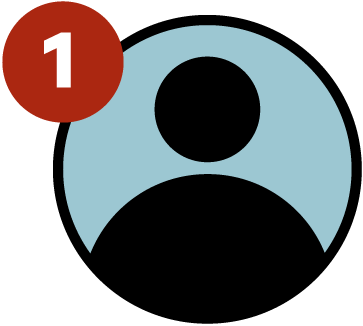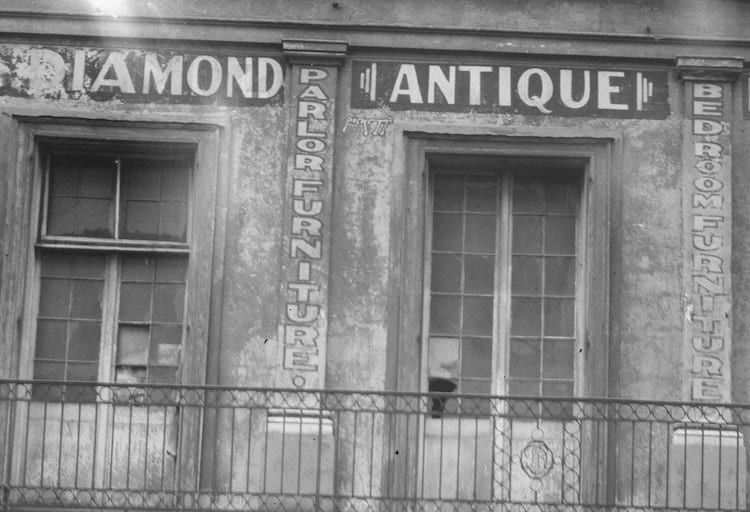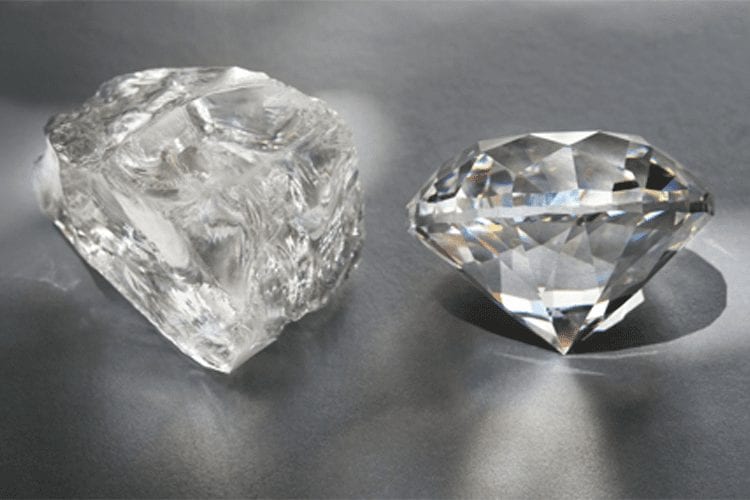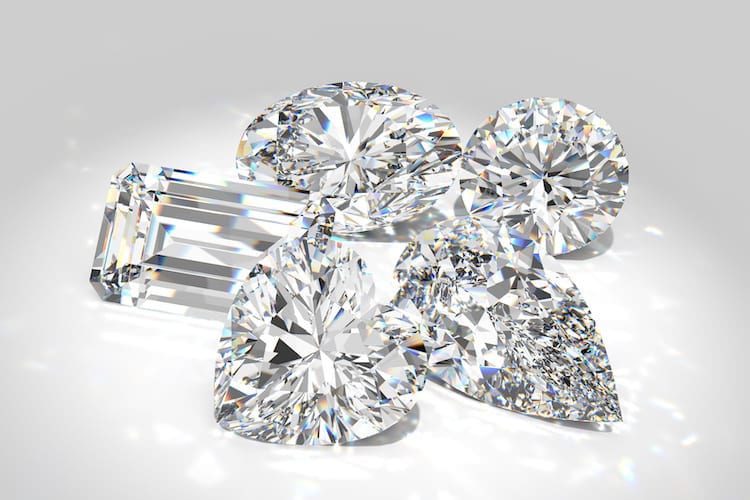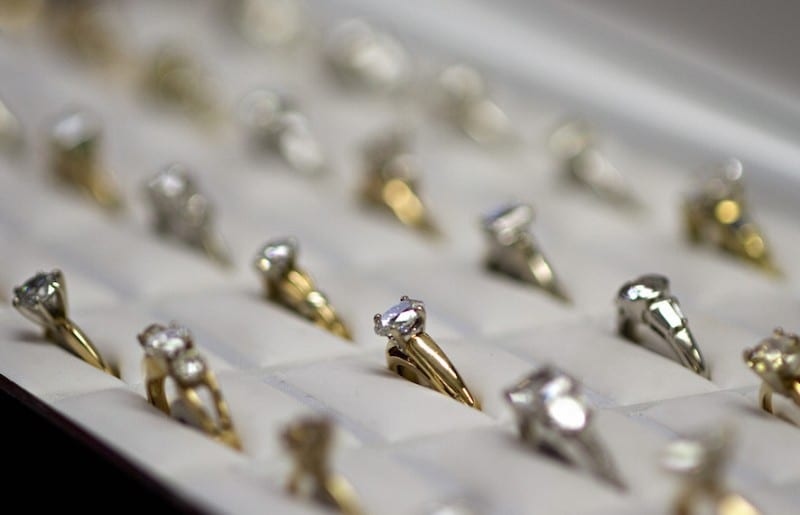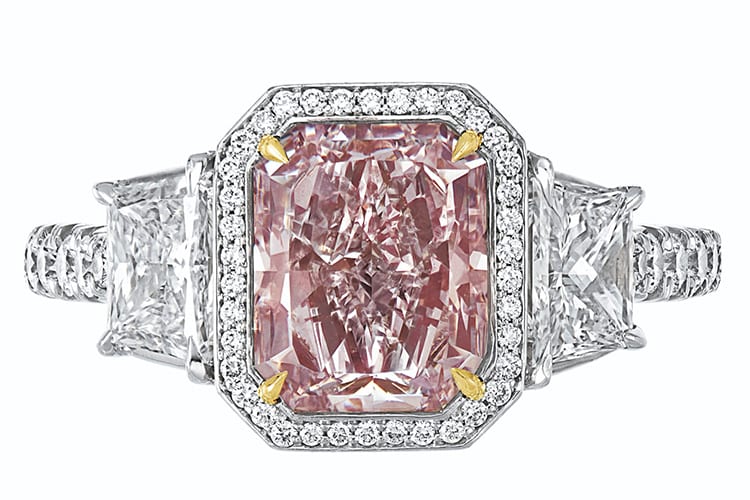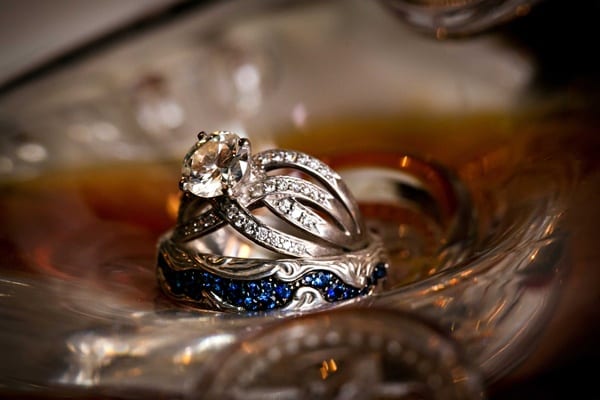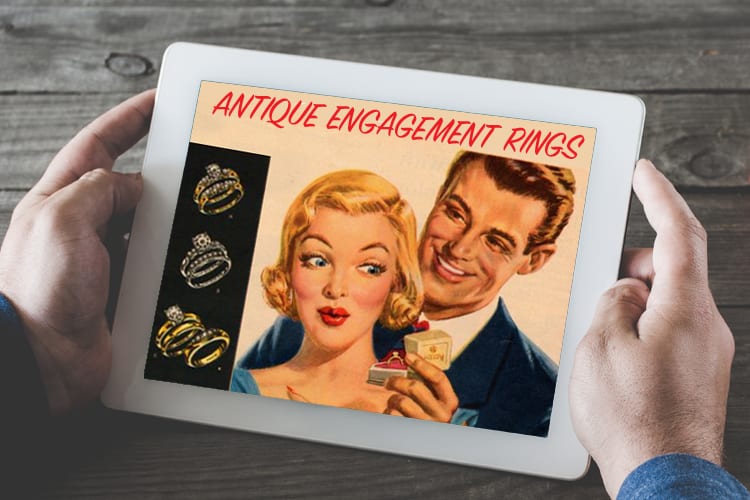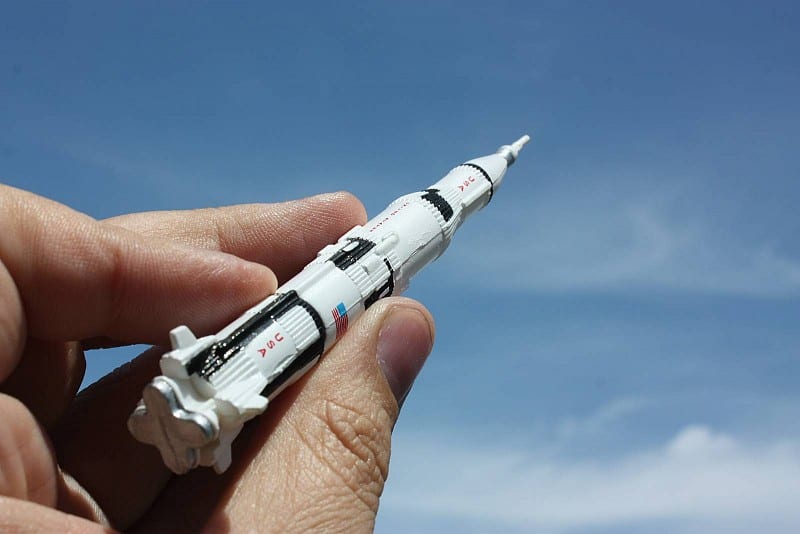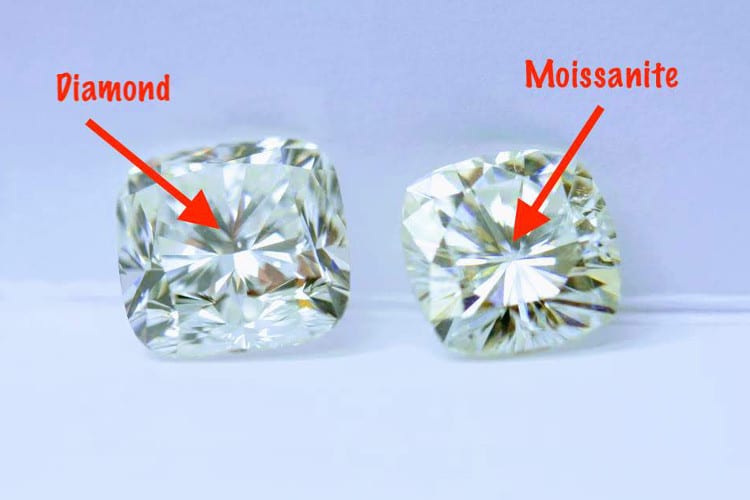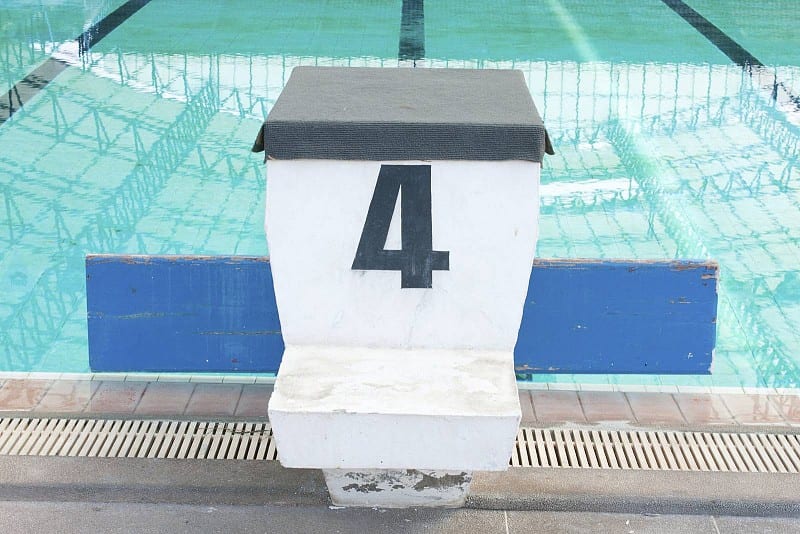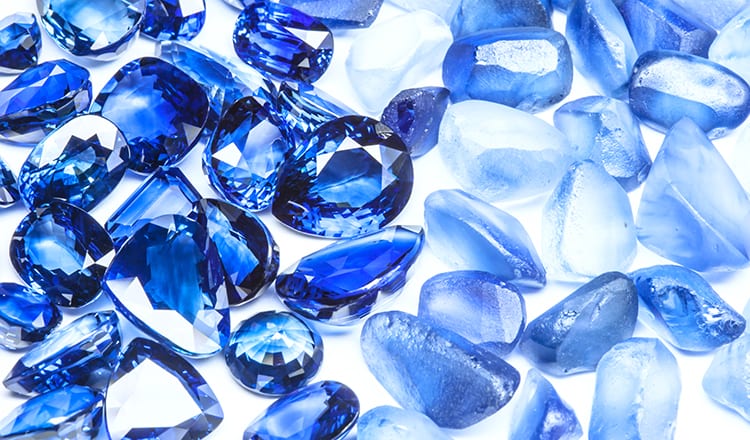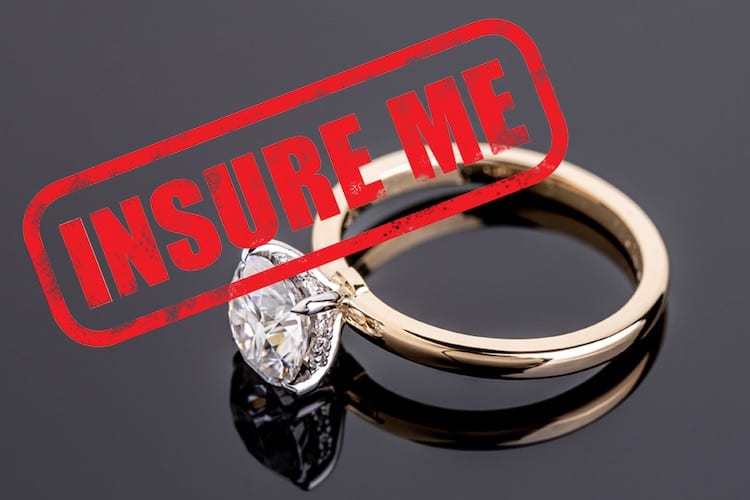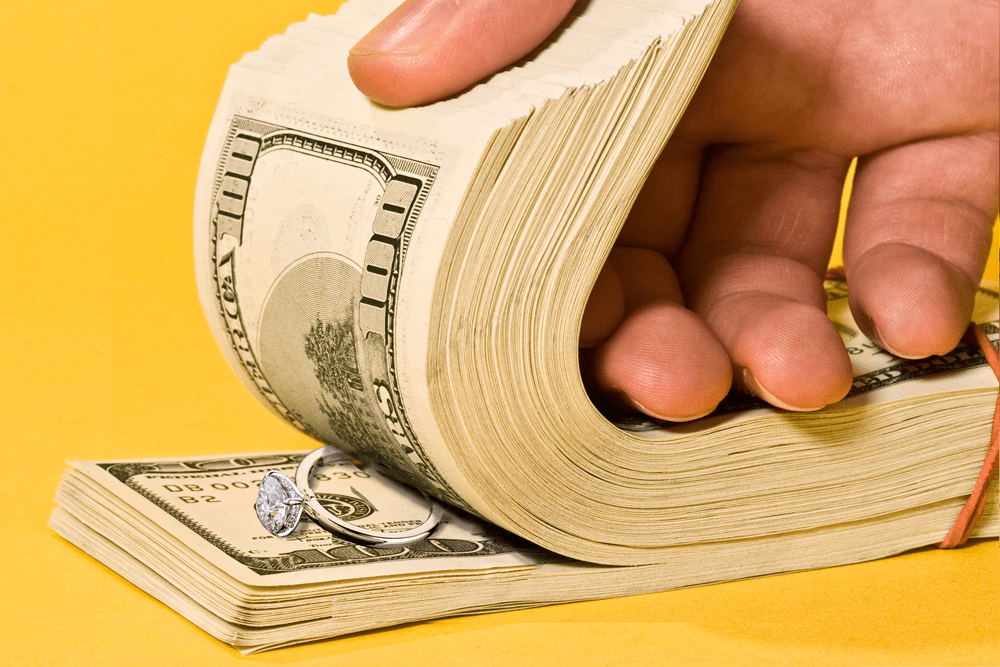
Things that Affect Diamond Prices
- Cut
- Clarity
- Color
- Carats
- Shape
- Other GIA report findings (polish, symmetry, fluorescence)
- Source/store
- Provenance: from the Earth or lab-made?
- Taxes
- Competition among jewelers
- Consumer demand
In an ideal world (i.e. not this one), diamond prices would be standardized and easy to grasp, like a can of baked beans on The Price is Right. You would tell Drew Carey a one-carat diamond costs $3,000 and you’d win a new car.
But diamonds don’t work that way. For one, diamonds are a commodity and their prices fluctuate, just like the price of other materials including gold and platinum. For another, diamond prices are subject to a long list of factors, including its quality characteristics, the source of an appraisal, and where you buy it.
Sound confusing? It is. But we can make it easier.
Diamond Prices: A Brief History
Every once in a while, you will see some self-proclaimed expert on Twitter — the official home of self-proclaimed experts — declare that diamonds are all a big illusion because there are tons of them in vaults. That person is wrong. But not totally wrong.
For over a century, diamonds were indeed controlled by a monopoly, which kept a huge stockpile in vaults to keep the market stable so that the prices would never fall. But by the year 2000, that system largely fell apart — though some people will swear it’s still around.
Today the diamond market is a lot more open than it was, and as result diamond prices are a lot more volatile. In fact, in the last few years they have generally trended downward — not in a huge way, but they have taken a hit. Bad economic times are the best times to get deals, but that’s true with most products.
The big diamond miners — and there’s only a few of them — do try to keep a “floor” on prices. If the market’s weak, they will not dig that many of them out of the ground, or they may wait a little while to sell them. But that’s not that different than other commodities. If the soybean market is weak, farmers might plant so many seeds. So, basically, the diamond market is far less controlled than it was, but it’s not exactly a free-for-all. And it’s still quite expensive and difficult to extract diamonds from the ground. Over the next few decades, diamond supply is supposed to go down in a big way. The writing’s on the (cave) wall; there hasn’t been a major new mine discovered in decades.
One note: This article focuses on natural diamonds. Made by Earth. Lab-created diamonds, on the other hand, are a different item and a different market, with different pros and cons. Lab-grown prices are generally cheaper than natural diamonds, so you can save money buying them in the short term. But since their production has no limits, in the long run their prices are expected to dramatically fall, which won’t do you much good if you ever want to trade it in. That’s your choice, though many say, if you put a lot money into something, you want to have some assurance it will retain at least some of its value.
Here’s one example: Below (left) is an Earth-created, one-carat round diamond with H color and SI1 clarity for $3,580, but the “lab-created” diamond (right) with virtually the same specs is much cheaper at $2,120.
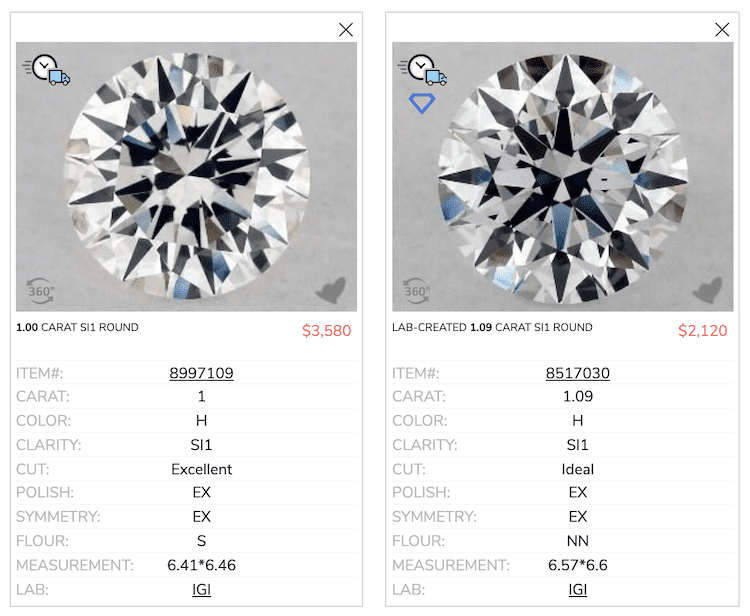
TIP: Do not confuse lab-grown diamonds with diamond simulants. Cubic zirconia is a common diamond simulant; it costs pennies to make. Most diamond simulants on the market are some variation of cubic zirconia. A lot of sites will try to fool you into thinking they are selling a lab-grown diamond, but are actually selling you a simulant at a grossly inflated price, using terms like lab-grown diamond simulant. Watch out for those people.
How to Gauge Prices Quickly & Easily
This is a lot easier than it used to be.
Once upon a time, customers had to go to five or six jewelers to comparison-shop diamonds. They would get a lot of exercise, and waste a lot of sales clerks’ time. Now, the Internet has made that process far easier. You set a budget, and then Google away.
The big sites selling diamonds are Blue Nile, James Allen, and Brilliant Earth. Online sellers are generally cheaper than their offline counterparts, but that’s not always true. Many retailers will match, or come close to matching, an offline price if pushed hard enough. Plus, most online retailers have to charge sales tax, killing a huge advantage they once had over traditional retail stores.
Where to Buy: Tiffany vs Costco vs James Allen
In real estate, it’s all about location, location, location. Same with diamonds.
For instance, if you buy a diamond from a wholesaler, you will get one price. If you buy it from a retailer, you will get a different one. And if you buy it from someone who stole it, you may get an even lower price. (You may also get arrested. Do not do this.)
Let’s say you go to Tiffany. It’s no secret the brand’s prestige — along with its signature (trademarked) blue box — adds to the price. That doesn’t necessarily mean the diamond will be any better. But people will pay extra for that brand name — just like a Louis Vuitton handbag costs most than a generic purse, even though neither is better at holding a pack of tissues.
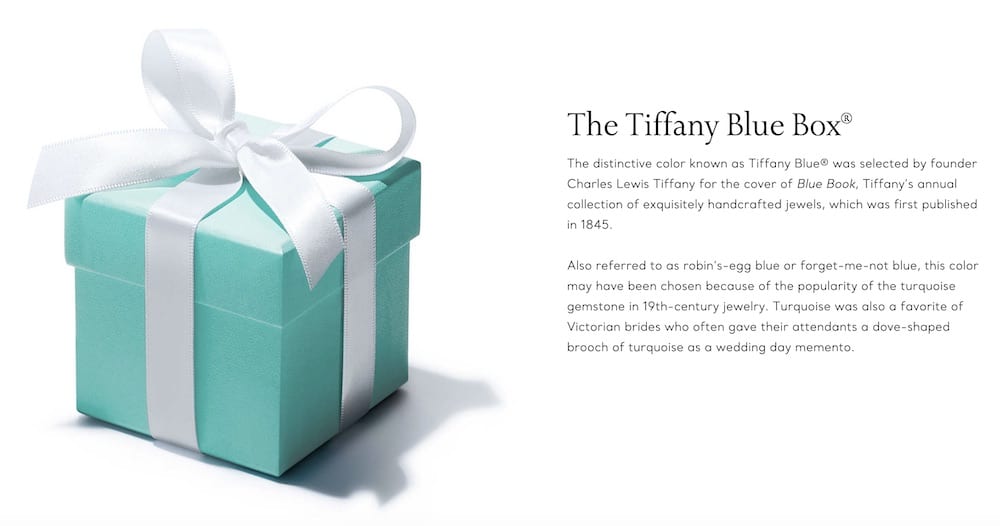
If you buy from Tiffany, Cartier, or a prestigious local or national name, that sends a message: I am a classy dude, who paid a lot for this, even if I’ll still be making the credit card payments when I’m 75. If you buy it from Costco, you aren’t sending a bad message necessarily, but let’s face it, it’s Costco. Buying at a site like Blue Nile or James Allen probably falls somewhere in the middle as far as prestige goes, but this is ultimately a personal and cultural issue.
A lot depends on your intended. Will she want to brag to her friends that her fiancé bought her diamond at Tiffany? Or will she just want to show off her big hulking rock, and not mention it was bought at the same place that gives out free cocktail weenies?
Below is a diamond ring from Costco that has a 1.0 center diamond surrounded by smaller diamonds (0.8 carats total) with a G color grade, VS2 clarity, oval cut in platinum. It’s on sale for $7,299.99 and comes with a GIA report.
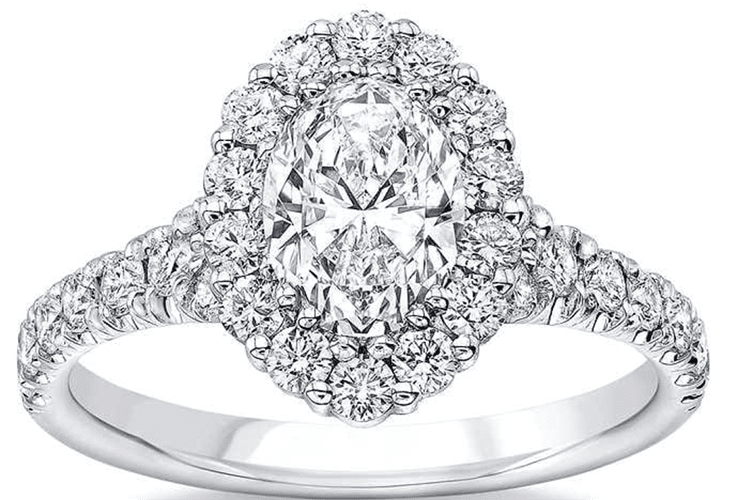
Below is a Tiffany ring featuring a 1.02 ct. G VS1 center stone, excellent cut, in a platinum setting. It sells for $14,700.
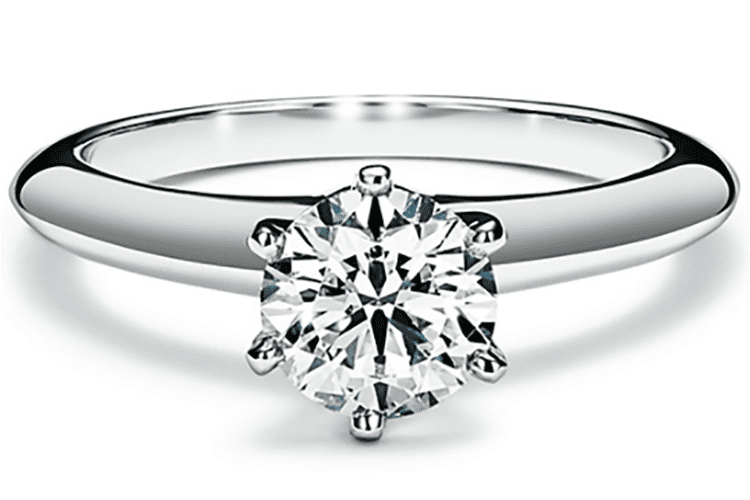
Note that Tiffany doesn’t even use the $99 trick; they’re not even pretending they’re giving you a deal. That’s the power of the brand.
This potency is not all smoke and mirrors. Tiffany is a well-established company that has an image to maintain, so it guarantees a certain level of service, salesperson knowledge, and training. While we haven’t tried it out, we would not expect that level of service at Costco, which isn’t really a jeweler, but a place that carries jewelry alongside 12 packs of paper towels.
A lot of local jewelers will go the extra mile to make sure their customers are satisfied because they see it as an advantage that they have over online sellers.
Still, they are all basically selling you the same product. So, if the price is higher, check and see what the extras are. Is there a money-back guarantee? Will there be service? Repairs? Are there trade-ins or trade-ups? Then decide whether the value proposition is worth it to you. This is an expensive purchase. That stuff matters.
How the Four Cs Affect Prices
Diamond prices are determined by four factors — the famed 4Cs. The easiest to grasp is the caratage, or how much it weighs. Considering a lot of people want big rocks, the number of carats is one of the biggest factors in determining price.
Carats & Diamond Prices
Natural diamonds are produced by nature and nature doesn’t cough up a lot of big rocks. So, the bigger the size, the rarer the stone is, and the higher the price. A 3 ct. diamond might be three times the size as a 1 ct., but it may cost more than three times the price.
At Blue Nile, last I checked, you could buy a 1 ct. round diamond, starting at $2,335 all the way up to $12,825 (factors, as always, include color, clarity and cut). However, a 2 ct. round diamond starts at $8,429 and goes all the way up to $62,637.
It’s about the same at James Allen. You can buy a 1 ct. round diamond starting at $1,700 all the way up to $14,350. For 2 ct. round diamonds, the prices start at $5,710 and end at $40,790.
At Brilliant Earth, you can buy a 1 ct. round diamond from $2,730, all the way up to $12,270. However, 2 ct. round diamonds start at $10,500 and end at $15,090.
Color & Diamond Prices
The next “c” is color. It refers, weirdly, to a lack of color. Color is generally represented by letter grades. The top color grade — given to colorless diamonds — is D.
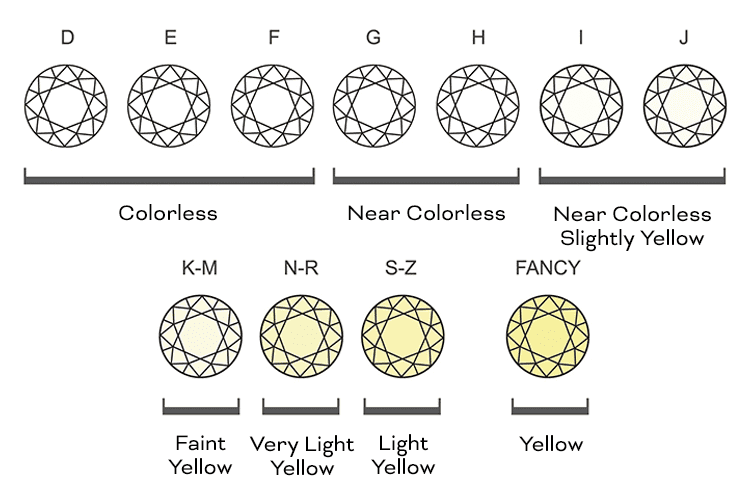
One would think the top grade would be an A, but when the Gemological Institute of America, or the GIA, devised the scale, they set the top grade at D so it wouldn’t be used for commercial purposes. That obviously didn’t work out too well.
The range extends from D to J, K, or even M depending on where you shop. (James Allen goes to J, Blue Nile to K, and Brilliant Earth to M).
James Allen

Blue Nile
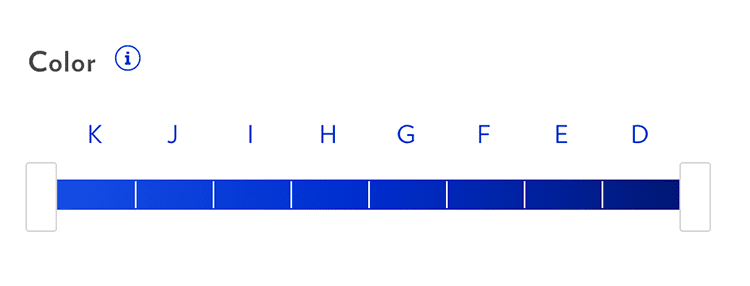
Brilliant Earth

The round diamonds below are similar in three of four ways:
Carat: 1.5
Clarity: VVS1
Cut: Very good
They differ only by color. You can see the price ranges for diamonds at the J, H, and F color grades and show the three examples of the F color grade finds.
“J” color grade range = $7,084 – $9,726
“H” color grade range = $10,070 – $12,691
“F” color grade range = $13,893 – $17,401
Here’s what those F grade diamonds look like. At left: $13,893. Center: $14,026. Right: $17,401. (All photos by Blue Nile).
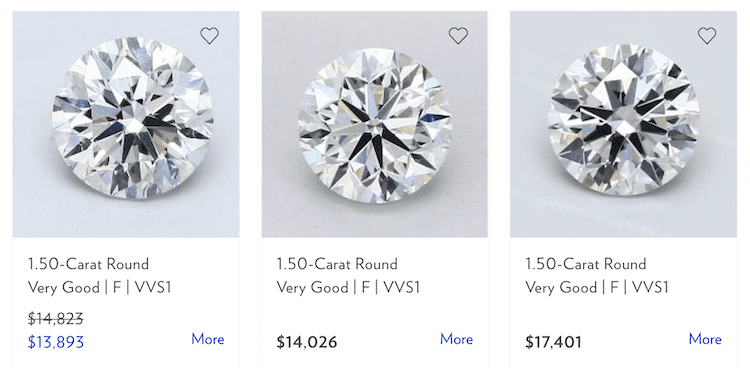
Clarity & Diamond Prices
Clarity, by contrast, doesn’t refer to how clear the diamond is. It refers to the amount of inclusions and blemishes in a diamond.
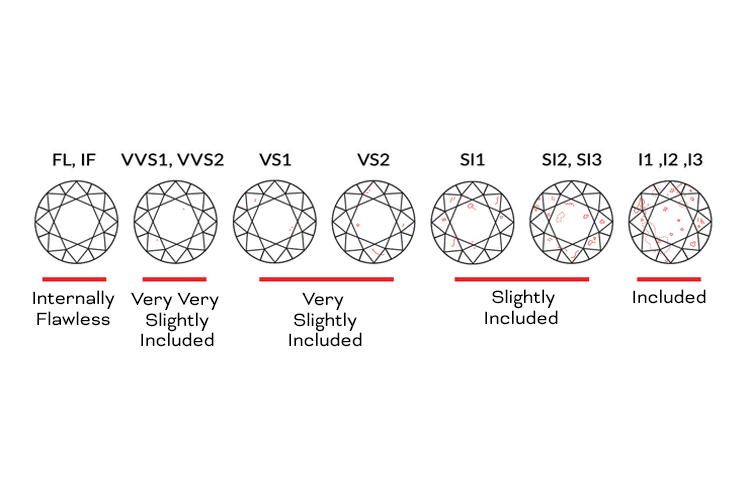
Most of these can only be seen under a microscope, so clarity generally matters less than some of the other Cs. The top clarity grade is flawless, though those diamonds are super-rare. Below that, the scale follows the following course:
- FL (flawless)
- IF (internally flawless)
- VVS1 and VVS2 (very very slightly included)
- VS1 and VS2 (very slightly included)
- SI1 and SI2 (slightly included)
- I1 – 3 (included)

All this VVS stuff can be very very confusing. Our advice: Steer clear of diamonds with “I” (included) grades; their blemishes are sometimes so noticeable that even your 90-year-old grandmother can see ‘em. Some SI diamonds don’t look so hot either, but that varies from case to case.
Here are three reasonably priced diamonds with good clarity:
This 1-ct diamond is of VS1 clarity, with H color and excellent cut. It goes for $4,500 at James Allen.
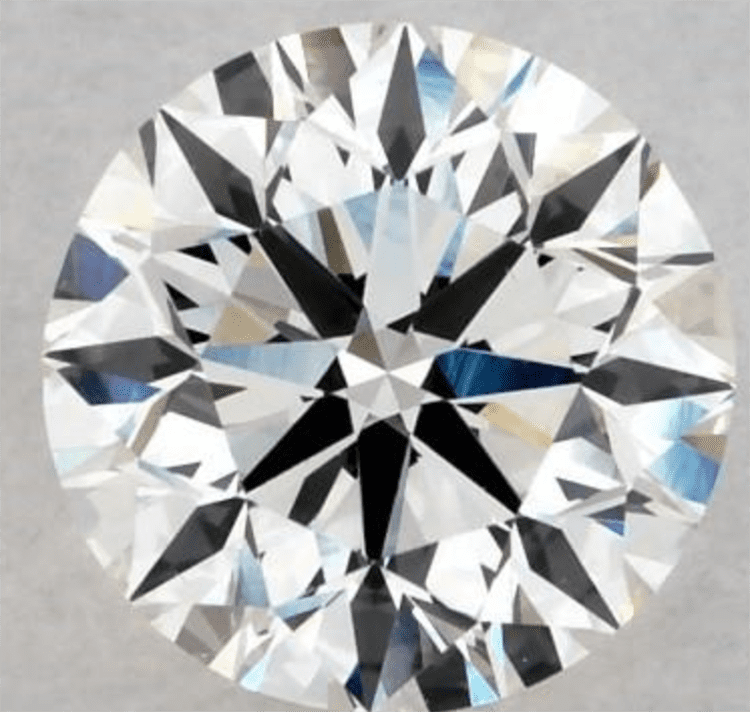
This 1-ct diamond is of VS2 clarity, with H color and a very good cut. It’s available for $4,495 at Blue Nile.
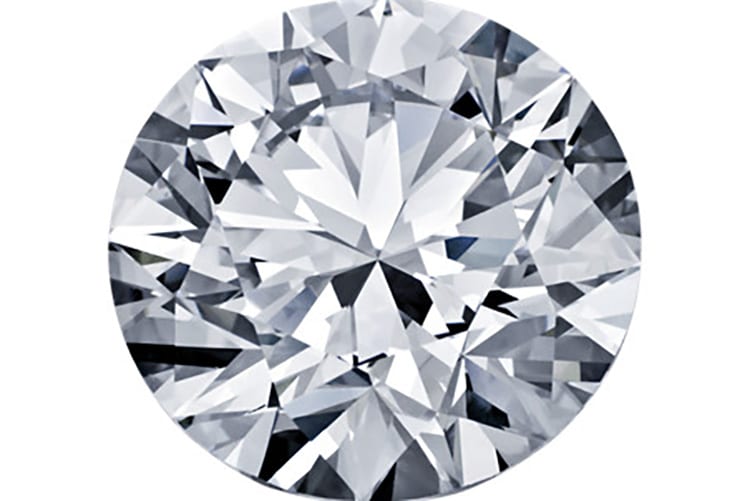
This 1.01-ct diamond is of VVS2 clarity, with G color and a very good cut. It’ll run you $5,330 at Brilliant Earth.
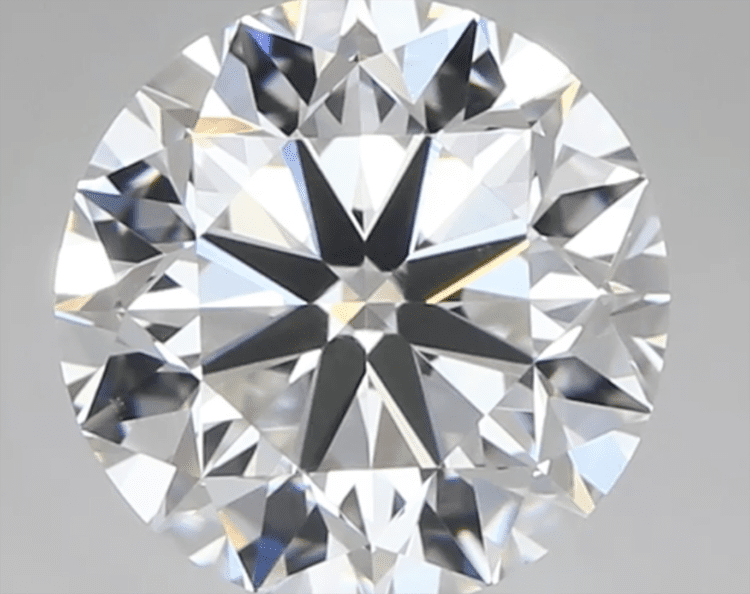
Visual example: Here’s how the James Allen site illustrates and explains the inferior clarity of “SI2.”
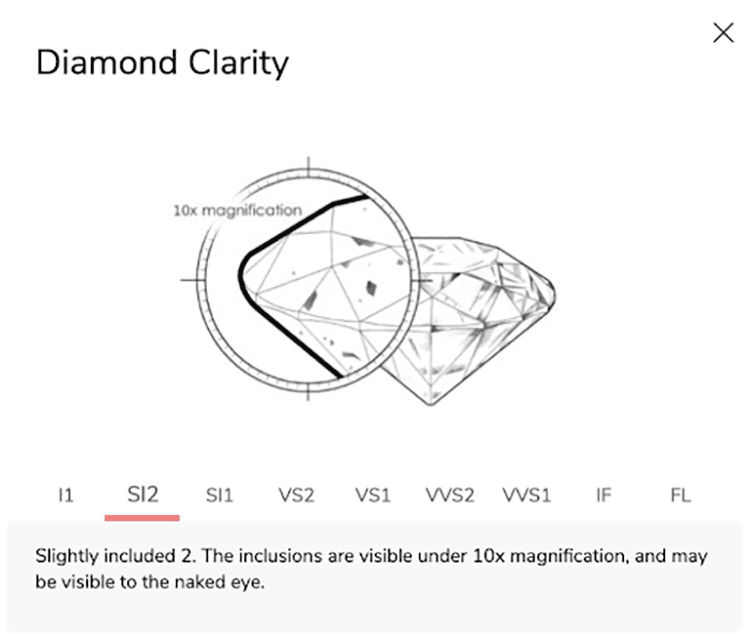
Cut & Diamond Prices
Cut — the fourth C — was long neglected as far as price goes. Now, GIA calls it “the most important” of the four Cs, even if it didn’t officially start issuing cut grades until 2005. Cut is extremely important in determining a diamond’s beauty because it determines how the light is reflected or “dances” around the stone. Also important are the components that make it up, polish and symmetry, which receive their own separate verdicts in grading reports.
As with its color and clarity scale, the GIA’s cut scale is widely used in the industry. The GIA’s scale starts at “excellent,” then goes down to “very good,” “good,” “fair,” and “poor.”
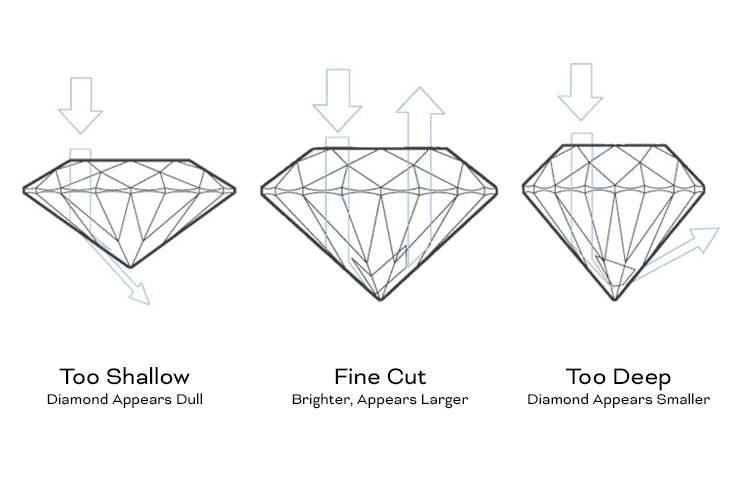
Some retailers will offer premium cuts with names like Ideal, Super-Ideal, and “Hearts and Arrows” — so named because that’s the pattern it forms under a certain microscope. These are usually very beautiful diamonds (a step above even excellent), but also very pricey ones. You won’t go wrong with one, looks-wise, but it’s up to you where you want to make that leap.
Here are some examples of diamonds with good cut grades from three different stores at three very different prices:
This 1-ct. diamond, with a VS2 clarity, H color, and an excellent cut is available at James Allen for $4,410.
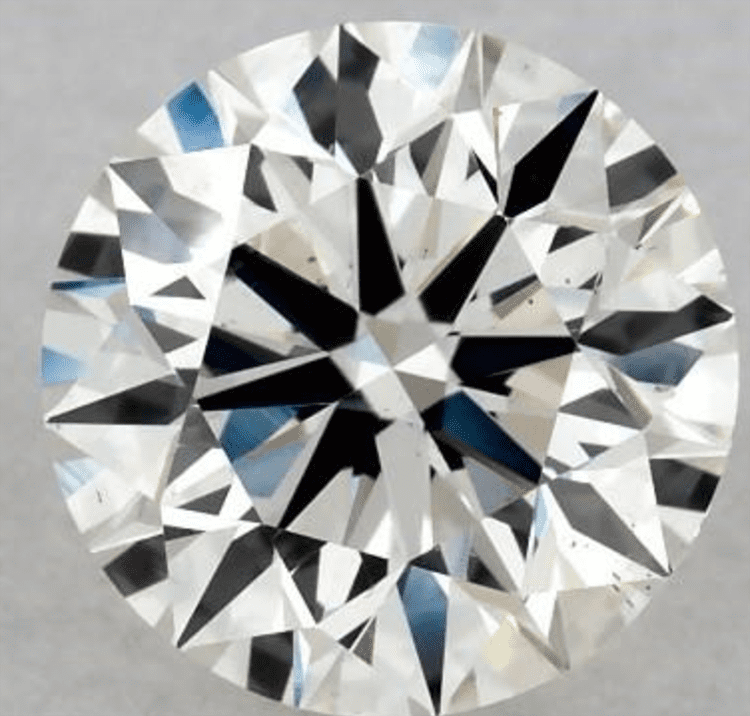
This 1-ct. round Astor Ideal Cut, with VS1 clarity and F color is going for $9,360 at Blue Nile.
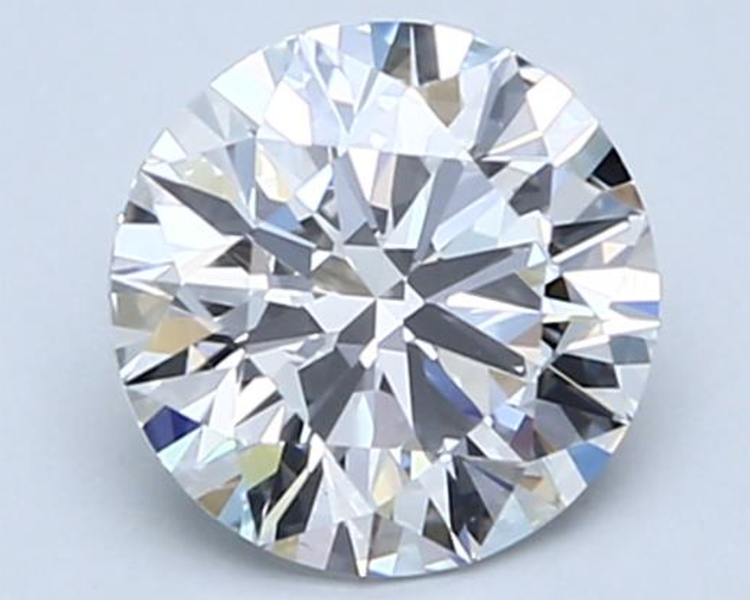
This 1.70-ct round diamond with a Super Ideal Cut, VVS1 clarity and F color, will run you $18,340 at Brilliant Earth.
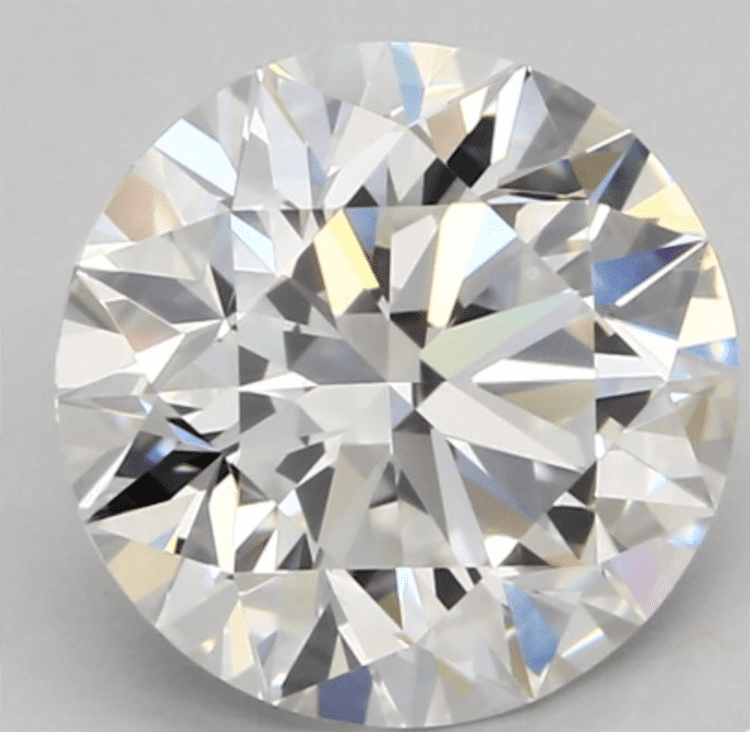
Tip: Unless the premium cuts really entrance you — and you have the cash to pay for them — go with a diamond that has an “excellent, “very good,” or “good” cut grade. “Fair” and “poor” diamonds look like the cutters had a bad hangover. You can barely even find them online. That’s how ugly they are. They are not even listed on James Allen or Blue Nile.
Which Shapes Cost Most
Then there’s shape, which a lot of people confuse with cut. A cut grade refers to the quality of the cut; the shape is the cut pattern. However, some salespeople will talk about shapes with terms like “princess cut” or “round cut” in an apparent attempt to keep diamond buying as confusing as possible.
A round diamond is the Scott paper towels of diamond shapes. It’s the thing that everyone buys. Because of that heavy demand, round diamonds cost more than other shapes, and there’s a lot more of them out there. However, if you want to do something different, a lot of the so-called “fancy” shapes — like Asscher and Princess cuts — can be quite beautiful diamonds.
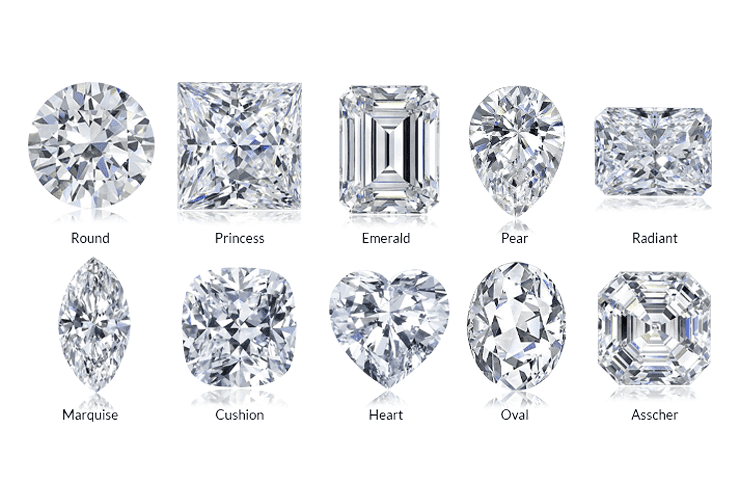
You may want to know if there’s any way to see sample prices for each shape? Well, it depends on everything. Here’s a range of prices all from Blue Nile:
[I will make this look better as a graphic but leave it in please]
- 1 ct. round shape: $2,285 – $17,337
- 1 ct. princess shape: $1,702 – $7,887
- 1 ct. pear shape: $1,762.- $10,870
- 1 ct. emerald shape: $1,828 – $8434
- 1 ct. Asscher shape: $1,743 – $6,927
- 1 ct. marquise shape: $2,500 – $8433
- 1 ct. radiant shape: $2,150 – $5,716
- 1 ct. oval shape: $1,790 – $9,933
- 1 ct. heart shape: $2,210 – $11,821
As a rule, diamonds with strong blue fluorescence sell for less, even though there’s strong disagreement over how much strong fluorescence affects a diamond’s appearance. The general consensus is that, in a very small percentage of cases, they give diamonds a “milky” or “cloudy” appearance. They also sometimes temporarily turn blue under a UV light source, like a spinning disco ball you’d see at a nightclub or a ‘70s theme night. But that can look kind of cool. And don’t worry, it will turn back.
Brian Gavin Diamonds even markets a line of blue fluorescent diamonds to let consumers take advantage of this “industry prejudice.” They range in price from $2,037 to $31,763 — a range as wide as regular diamonds.
How Diamond Grading Affects Prices
Most diamonds come with grading reports, issued by grading labs. But not all grading labs are created equal.
As you may remember, in school there were certain teachers that were known for being easy. Their classes were very popular because you could get an “A” — and when someone reviewed your transcript, they didn’t know that the grade you got was from the old doddering dude who gave out As like candy.
In the diamond world, there is the equivalent in some labs. They probably shouldn’t exist, but they do — and most reputable sites go with labs that are considered tough graders, especially the GIA, which is the best-known lab. Also trustworthy: the AGS, and GCAL.
Beyond those, it’s a pretty mixed bag. It’s not a good idea to buy a diamond accompanied by a report from a lab with a bad reputation — we’ll be nice enough not to name them, but a little Googling should clue you in. If you pay for a diamond that’s graded an “E,” you should get an “E” diamond.
The problem is this causes grade inflation and prices the diamonds from the easier labs accordingly. So the questionable lab’s Es are often priced the same as a good lab’s Fs or Gs, because they are basically the same diamond. Which means you might think you’re getting a deal, but you’re really not, you’re just getting a potentially crappy diamond with a meaningless piece of paper attached.
Again, the best judge is your eyes. But even then, buy only when a stone comes with paperwork from an accredited lab.
The image below demonstrates how changes in carat, cut, color, and clarity raise and lower the price of a diamond. (Photo courtesy of James Allen.) The green arrow indicates an improvement, while the red arrow conveys a step down in grading — as compared to your current base selection (the ring at far left).
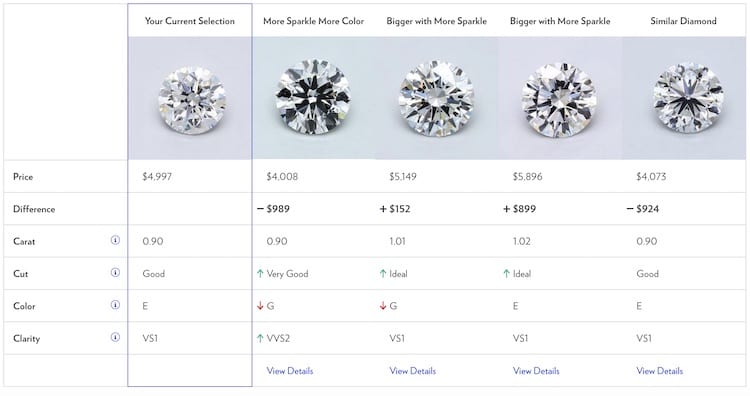
Diamond-Buying Strategies
Here are some good rules of thumb when pricing diamonds:
- Don’t be afraid to ask for advice! Diamond-buying sites aren’t like Amazon, where you just push a button and the order comes. They know guys are confused by this stuff and they all have customer service people whose job it is to talk with people like you. You can ask them about their diamond education if you like, too.
- A middle-of-the-road stone includes G color and VS1 clarity. The world won’t end if you buy a diamond with grades that fall below that. But try not to go too much below that — like with an L I1 — or your diamond might be a dog.
- You often hear that it’s good to “buy shy,” that you should buy just below the benchmark. The thinking goes, since everyone wants a 1 ct. diamond, you can get a better price on a 0.99 ct. gem, and the actual difference in size is minimal. However true that may have been, it seems like the sites have caught on to that trick.
For instance, at Blue Nile, a 1 ct. round, K color, VS1, very good cut sells for $3,356. A 0.99 ct. diamond with the same specs goes for $3,348. A $7 difference.
At James Allen, you can get a 1.98 ct. round, D VVS1, excellent cut, for $39,760. A 2 ct. round, D VVS1, excellent cut, goes for $40,020. That’s $260 savings on a 40K purchase. Bupkis.
Interestingly, neither James Allen nor Blue Nile lists all that many 1.98 or 1.99 ct. diamonds, or even that many 0.98 or 0.99 ct. diamonds. It seems like they either want to discourage buying just below the benchmark, or demand is so heavy they keep running out. In any case, that is not the magic bullet some seem to believe.
- As with all things, when buying diamonds, you want to look for balance. Poor color, clarity, or cut can mess up a diamond’s appearance, so try not to neglect any of them.
- That said, don’t go nuts! A stone graded “E” will almost certainly be a beautiful diamond, but that doesn’t mean you’ll notice the difference between an E and an F — at least without a microscope. And most of us don’t carry those around.
In the end, what’s important is not what a piece of paper says, but what your (and her) eyes see.
That’s where physical stores have an advantage, as you can see the diamonds side-by-side, compare how much the difference in numbers really matters, and see whether a particular diamond “talks” to you. E-tail sites have different technologies that let you compare the diamonds, though in the end, seeing something online is no substitute for seeing it in front of you. Ask anyone who’s used Tinder.
Quick Overview of Tips
- Do your homework on the 4Cs and diamond shapes.
- Learn the difference between earth-grown, lab-grown diamonds, and diamond simulants.
- Ask friends for advice and referrals to trusted jewelers.
- Shop around to get a sense of real prices.
- Call customer service and salespeople (and/or use a site’s chat advisors).
- Ask questions. When you’re laying down a large amount of money, you deserve answers.
- Don’t believe phony inflated appraisals; the value of a diamond is what you paid for it. No one is selling $10,000 diamonds for $5,000. Otherwise, people could make thousands of dollars a day just buying and selling them all day long. They can’t.
- Beware of deals that seem too good to be true, as they usually are. If you’re looking at a diamond that seems way cheaper than other comparable diamonds, make sure you find out why. There’s usually a reason.
Which Price Guides You Can Trust
If you’ve spent way too much time researching diamond prices, you will see references to the Rapaport list. It’s considered the “Bible” of wholesale prices, though many diamond people spend as much time swearing at it, as on it. But the entire industry uses it anyway, as diamond dealers are strange people who like to complain.
Sometimes retailers will show it to consumers and tell them it’s “the wholesale price list.” It is, but as it states pretty clearly, it lists “high New York asking prices.” It’s generally considered 30% to 40% higher than regular wholesale prices, though the discounts can vary. As many jewelers operate on around 30% to 40% margins, it is probably closer to a retail price list, but the prices tend not to change as much as real prices do.
That said, if you are dying to look at the latest Rap list, you can buy one here for $50. But again, even armed with that info, it’s not clear how much good it will do you. It’s not like Blue Nile is open to haggling — here’s a peek at some of their prices below, which you can sort by any column/factor and tweak to change price or size on their website.
[GRAPHIC BELOW NEEDS WORK – TK]
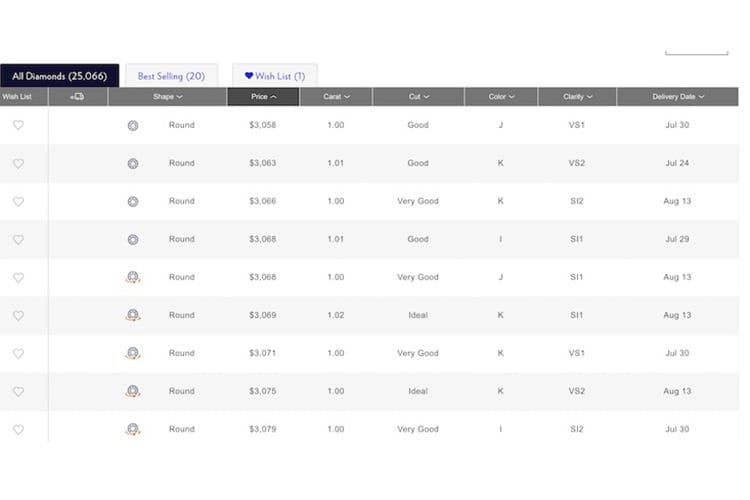
If you want to see a real retail price list, go online and see how much retailers are charging for diamonds. The GIA mentions (but does not necessarily endorse) the following companies, all of which publish diamond prices weekly, monthly, or bimonthly — and usually for a fee.
[THIS LIST NEEDS BETTER VISUAL TREATMENT – TK]
The Diamond Registry® Bulletin Published Monthly, Diamond prices only
The GemGuide Published Bimonthly
IDEX Online Diamond Price Index Published Weekly Online, Diamond Prices Only
Michael Goldstein, Ltd. Published Quarterly, Antique-Cut Diamond Prices for Old Mine Cut, Old European Cut, and Rose Cut
Michelsen Gemstone Index Published Quarterly, Diamond (including colored diamond) and Colored Stone Prices
Michelsen Rough Diamond Pricing Guide
Palmieri’s Market Monitor Published Monthly, Diamond (including heat/irradiated and old diamond cuts), Colored Stone and Auction Prices
Polygon Network, Inc. Diamond and Colored Stone Prices
Rapaport Diamond Report Published Weekly, Diamond Prices Only
Troy Diamond Report Published Monthly Online, Diamond Prices
BOTTOM LINE: TK

